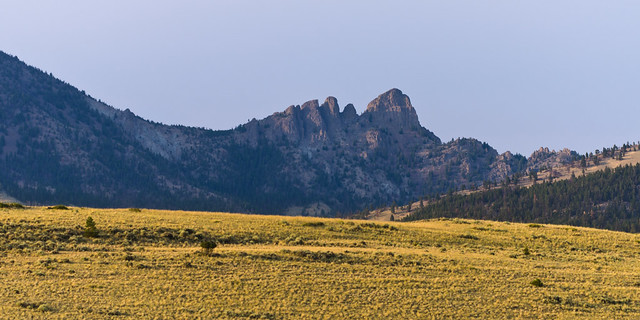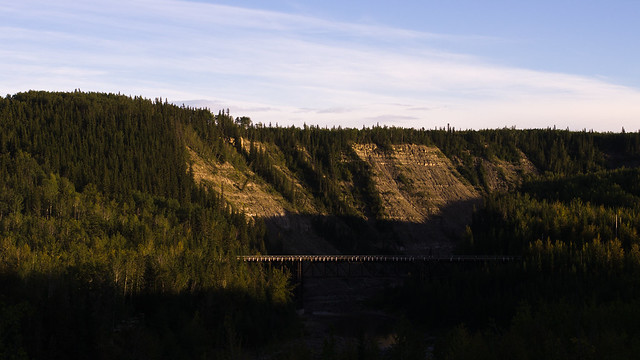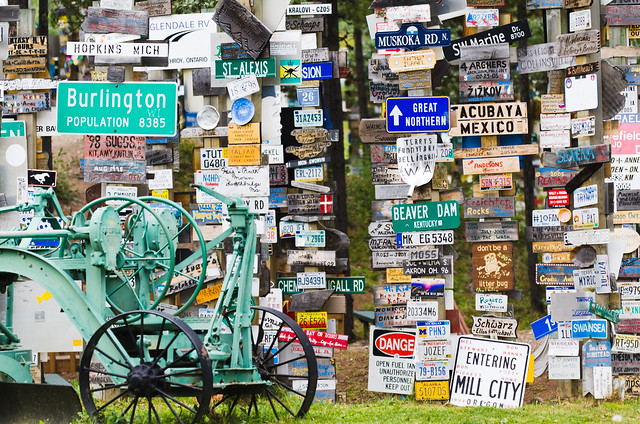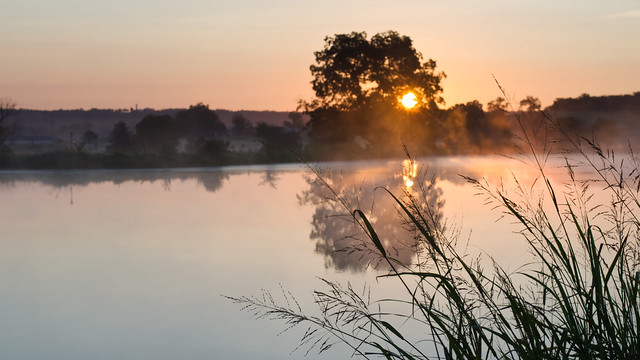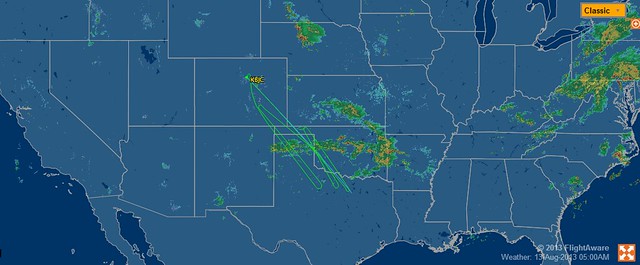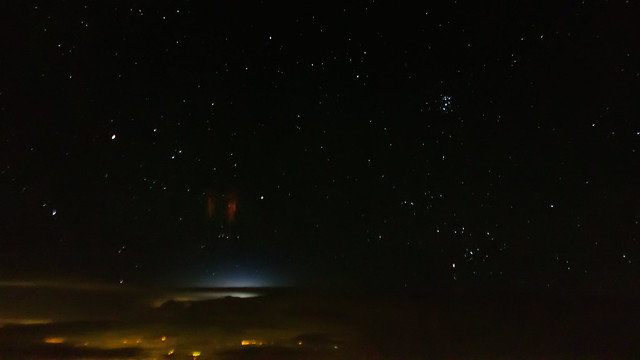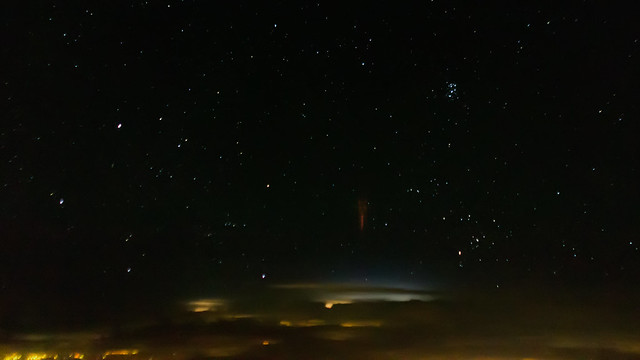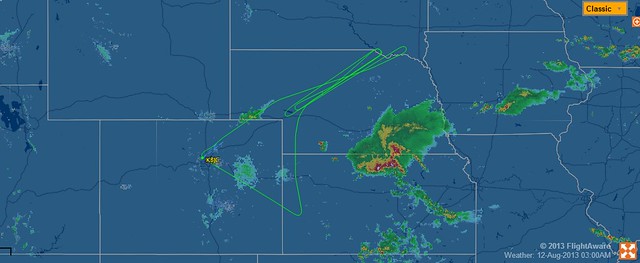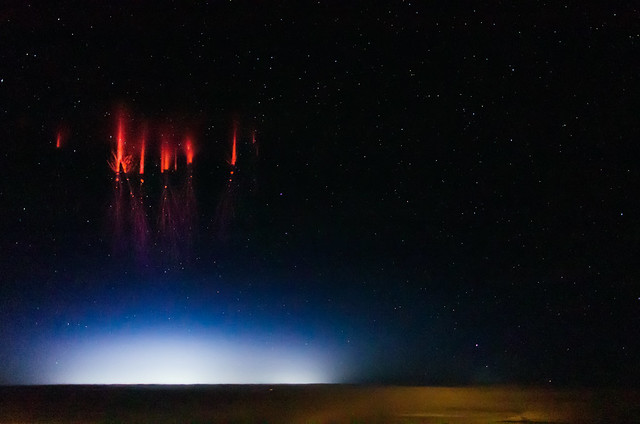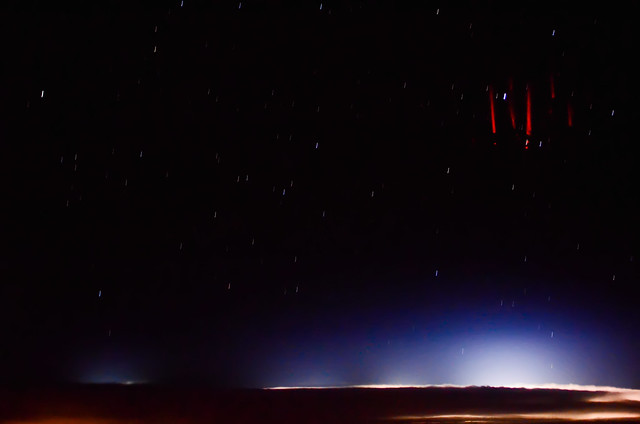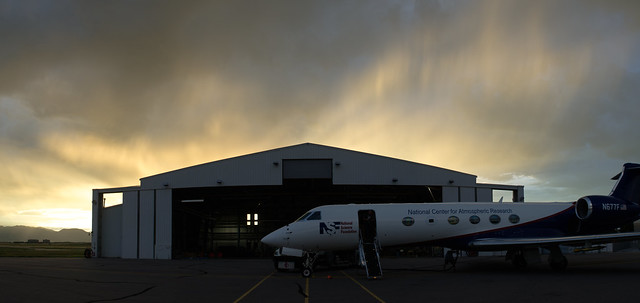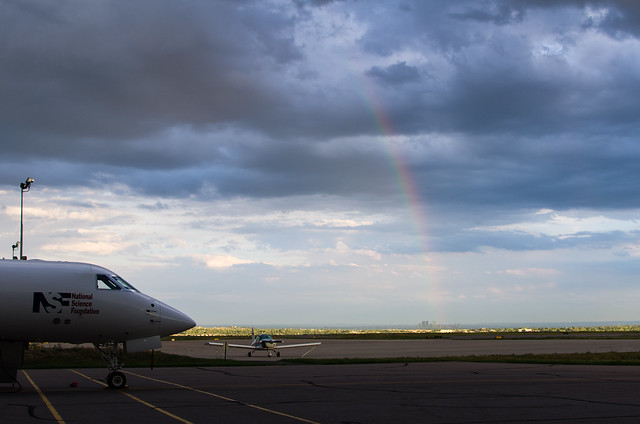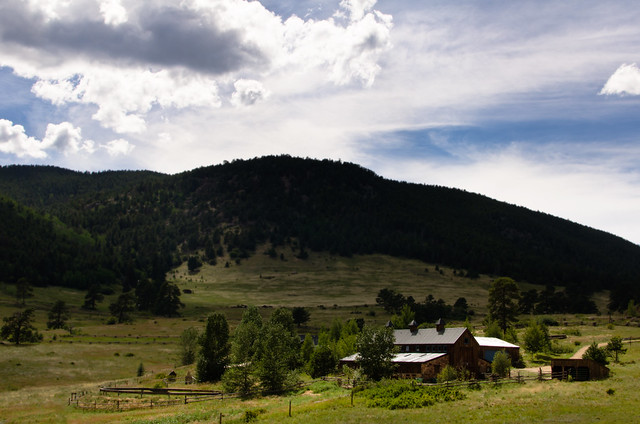
Last night we got out on the north edge of the storm and ran 'racetrack' paths back and forth. Scientifically, it wasn't a great night. The storm was nice and productive when we arrived on station, but the activity was spread out along a line, rather than focused in a hotspot, which makes pointing the cameras much more difficult - we basically wait to see sprites in the wide angle context cameras, then point in the spot they just happened. Well when the sprites are occurring all over the place that doesn't work so well. We only captured 7 sprites to high speed, and only one had a really usable spectra. After the first two racetracks the storm died off and we didn't really see anything for the next two, so we called it a night and went home.

Flight path in green.
However, I'm thrilled about last night for other reasons: I managed to capture both
jets and sprites with my dSLR! I only know of a couple examples off the top of my head where people have captured sprites in SLRs, and I can't find
any examples of jets captured with SLRs - am I the first? Since jets tend to hug the top of the clouds it's understandable that they're more difficult for a ground observer to see/photograph, so it makes sense that being up in a sprite-chasing aircraft would give me a serious advantage. The photo at the top of this post is, IMO, the cream of the crop, despite the strong motion blurring (the pilot
would pick that moment to hit a bump...) It shows three jets shooting out of the cloud top just above some lightning, and it's even fairly well composed. Magic. Here is a good shot of a single jet - it looks like a blue butane lighter flame sticking out of the top of the cloud:
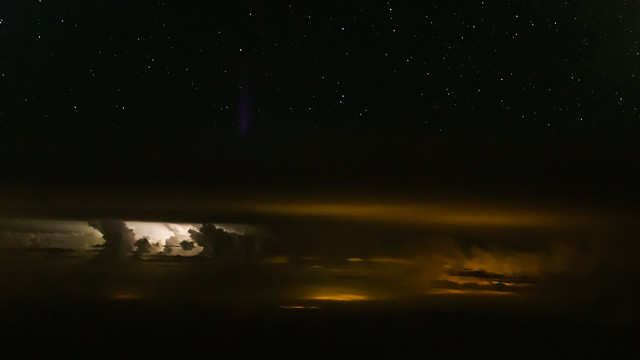
And here's the sprite I got, it's the red alien jellyfish on the top right:

Since I have a good starfield in both images, and I know we were about 200 kilometers from the electrically productive part of the storm, I can estimate the size of these things... but it's far easier to wait for the astrometry.net solver to give me a degrees/pixel solution than to figure it out myself, so we'll just wait for that.
For the technical aspect (skip this paragraph if you don't care about photography), I was shooting 1 second exposures, from a moving aircraft,
handheld. I butted the camera up against the window glass and put my weight on it to get rid of most of the wobblies and light leaks, but the motion of the aircraft itself still showed up, especially when we hit a patch of turbulence (we are, you know, flying right next to a thunderstorm). The city lights on the ground showed quite a bit more motion trailing than the stars so I cropped them out, but it was interesting to notice. For purposes of focus you think of both the city lights and the stars as being 'at infinity', but for purposes of parallax they really aren't. The instantaneous phenomena, the lightning, jets and sprites, show no motion blur. I used a 35mm f/1.8 lens held wide open, ran the camera at ISO 6400, subtracted a dark frame from all of them to get rid of the systematic noise, then ran strong noise reduction to help with the random noise. Some light dodging on the
TLE's to make them a little more visible, but they are otherwise pretty much as-shot.
I was also able to see quite a few jets with my naked eyes! That's a first for me, and I'm always excited to see a new sky phenomenon for myself. I still haven't been able to see a sprite naked-eye, and it impresses me just how
difficult that actually is. I'm flying in a private jet, right next to a thunderstorm, for the specific purpose of imaging sprites. I have very good low light eyesight, and I've watched tons of sprites in real time on the context cameras so I know exactly what and where to look. I was watching intently out the window while I snapped these shots, and the camera caught a sprite that I didn't see. Garggghhh! Since a typical sprite only lasts a couple of milliseconds, it's entirely possible it happened during a moment I looked away, or blinked. But still... Takeshi did manage to see one by eye last night, his first, so I'm not giving up yet.
